Meet GeoEx Mongolia Tour Guide Ishee Battulga
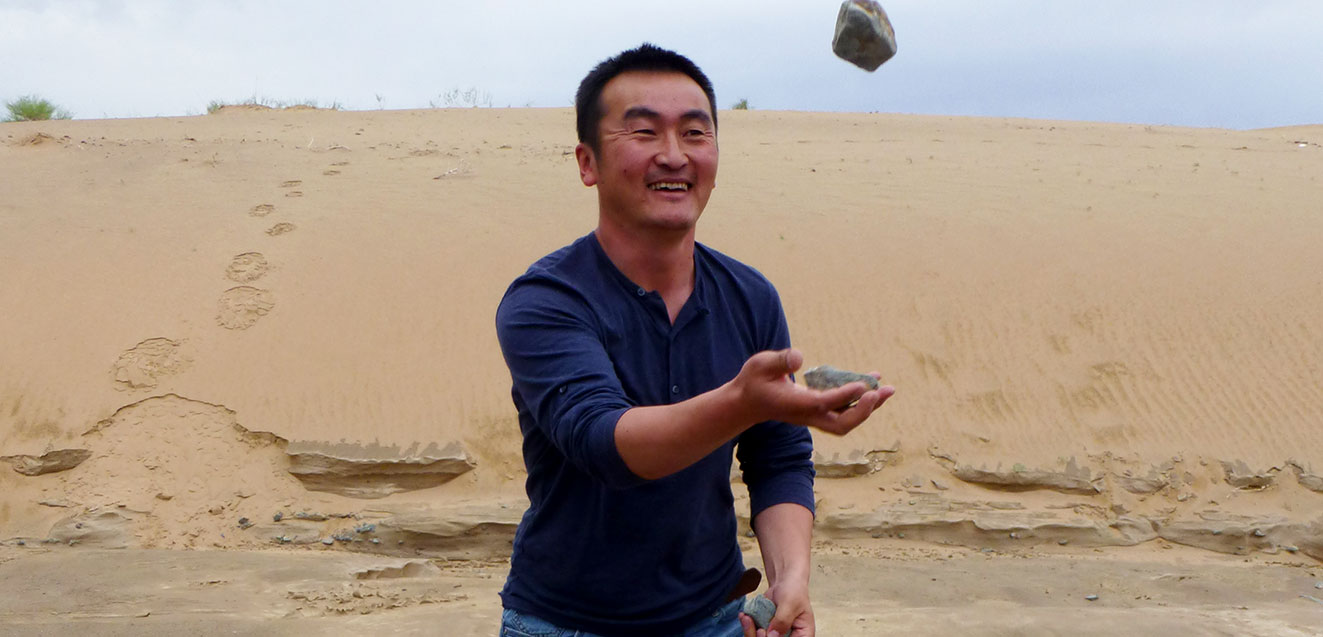
Ishbaljir Battulga sings folk songs while he works. It’s a clue to his deep passion for revealing Mongolia’s hidden charms to foreign visitors as a guide. Born to a nomadic family, “Ishee” attended university in the capital of Ulaanbaatar, but never let go of his deep roots. Wanting to share the breathtaking Mongolian countryside with the world, he helped develop the Mongolian Tour Guides’ Association, setting standards and training new guides. Ishee has guided GeoEx trips for over a decade and we recently worked with him to develop an exciting itinerary to wild western Mongolia—where unusual wildlife roams the slopes of the Altai Mountains and nomadic peoples carry on centuries-old traditions. We talked with Ishee about why he’s so passionate about the new trip Shadowing Mongolia’s Snow Leopards.
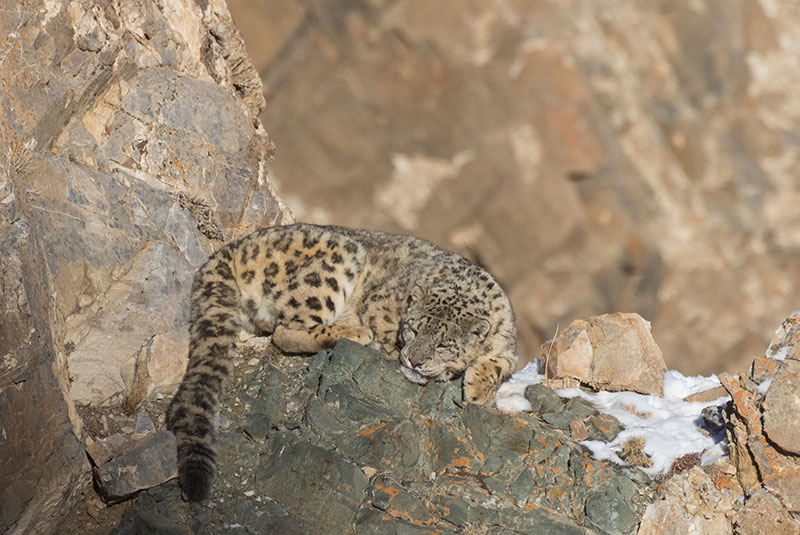
What is special to you personally about this area of Mongolia?
There are three things that stand out for me about western Mongolia: the majestic Altai Mountains and their breathtaking scenery, the ancient traditions and cultures of this very remote region, and the untouched wildlife. Of all the places I have been in Mongolia, this is the one place I get excited every time I come.
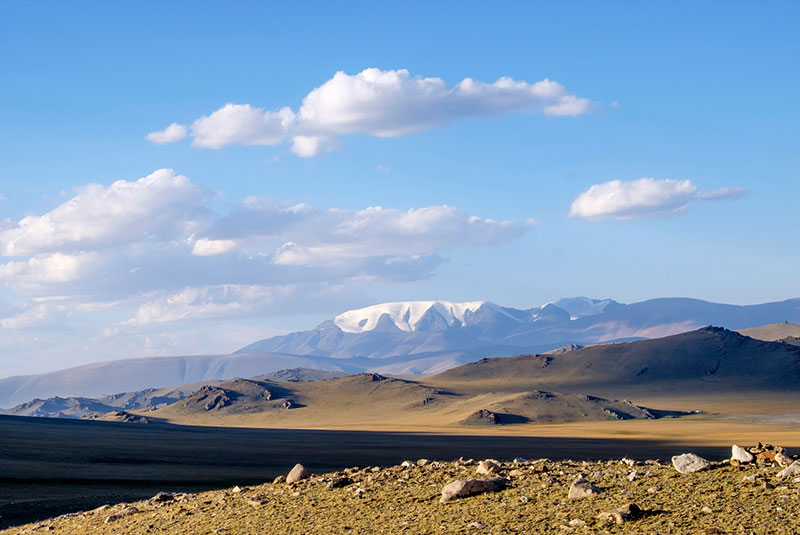
What should people be looking forward to the most on this trip?
Seeing the snow leopard is the focus of this trip, but on similar trips in the past, I have found that people always end up commenting how the entire trip was satisfying — even if they didn’t see a single snow leopard. Our everyday treks pass through dramatically beautiful Altai Mountain landscapes at every turn and every corner. We see nomadic peoples’ lifestyle that hasn’t changed for centuries and enjoy their rare encounters with Western travelers. In the evening, retreating back to our base camp for the comfort of a firelit ger and excellent food, we share our experiences of the day over a drink and anticipate tomorrow’s new adventure in an atmosphere that is as far away as possible from modern technology.
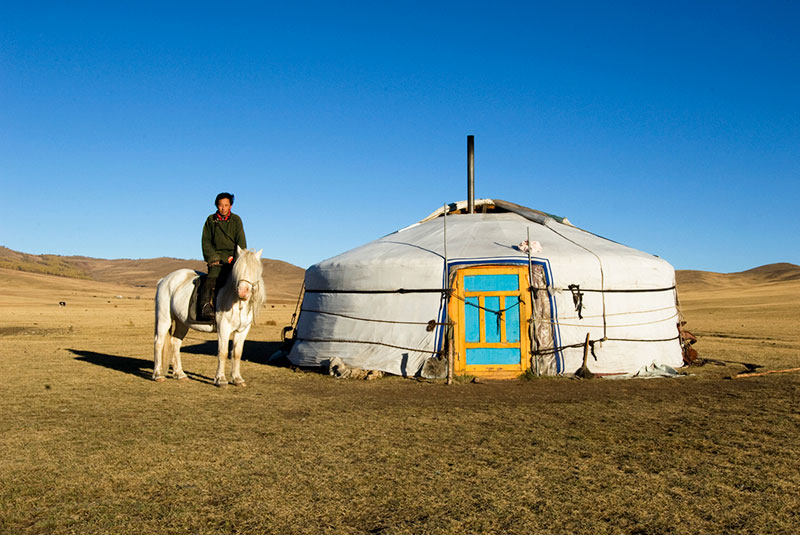
What about tracking the snow leopard?
Every day is fresh new excitement as we gather information, analyze, make decisions, and execute in the area where any hillside or rock could produce a snow leopard. Guided by the local peoples’ information and following the fresh tracks of a snow leopard sometimes leads you to spot one that is 100m away. Trying to figure out where it may pop out next time is a pure adrenaline-rushing experience.
When did you last see a snow leopard?
Last October, I had a group of 13 people and we started the day around 6am. About 30 minutes into the walk, I set up the scope to scan the area and found a large brown spotted snow leopard standing on the ridge about 500m away. It obviously had already seen me and it was looking down right at me. Regardless of how many times I’ve seen this majestically beautiful creature, my heart went pounding. I could clearly see the long body moving along the ridge so elegantly as if it was gliding along. I helped set up several scopes pointed at the snow leopard and the whole time we could follow it, moving in the direction it was traveling. We all could see how confident this creature is knowing he is the top predator and how he couldn’t care less about our presence.
Why is Mongolia the best place to see a snow leopard?
The snow leopard is Mongolia’s best kept secret! A lot of people think Ladakh in India is the best place to see them, but Mongolia actually has more than twice the snow leopard population of India. Because they live at lower elevations here, we combine our tracking with meeting local people and hearing their stories about the snow leopard.
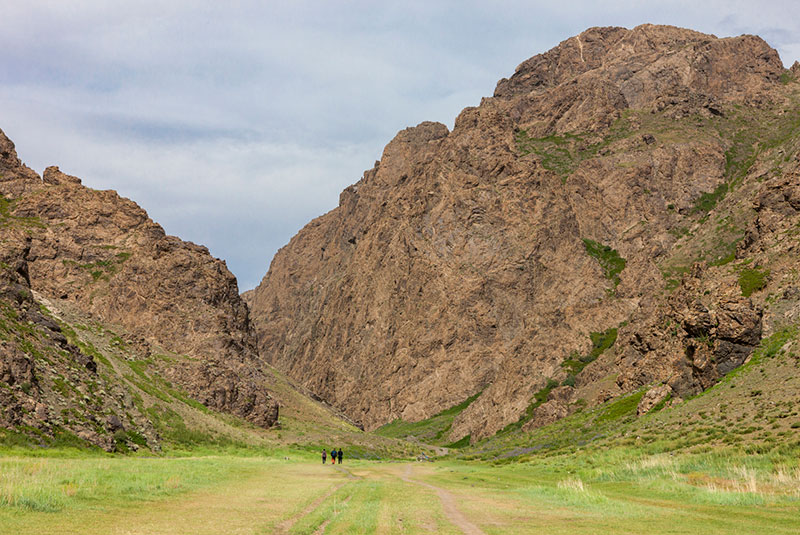
Why do you think people should take this trip with you as a guide?
I have a personal interest in wildlife, especially snow leopards. I first started going out on my own to see them and then donated to a local conservation organization. Becoming a member, I learned more about this particularly elusive creature. And I especially love the Jargalant Mountain region for snow leopard searching. Together with my partners and contacts, I have run several trips here with a 100% success rate so far. I have a strong feeling that as long as people stick with me, they will see one!
What is most surprising about this area?
The ease of access to snow leopard habitat in terms of camping, hiking, and altitude, and the density of the population on Jargalant Mountain.
What is the relationship between endangered species and travel?
I started using one of the local herders in the area as my local guide and a fixer for renting gers to be set up for clients. This former poacher, who had been punished for his illegal actions, is now completely converted and cherishes his connection to tourism that enables him to gain more than poaching. In some cases, he pays his neighbors to look after his animals while he is working with me. This is a very strong message to his neighbors and friends, and they now seek the opportunity to follow his footsteps. It is a direct impact on preserving any wildlife and its habitat especially for the snow leopard, as there is tension and conflict between herders and these predators.
In addition to the wildlife and mountain scenery, is there a special food/craft/music that shouldn’t be missed from this region?
Yes! This particular region is known for an amazing throat singing tradition that will be demonstrated during the trip.
[Editor’s note: For those wanting to know more about throat singing, we recommend the inspiring Sundance Award-winning film Genghis Blues http://www.genghisblues.com/.]
* * * * *
To join Ishee on the Shadowing Mongolia’s Snow Leopards trip or to explore any of GeoEx’s other far-flung locales, give us a call at 888-570-7108.

